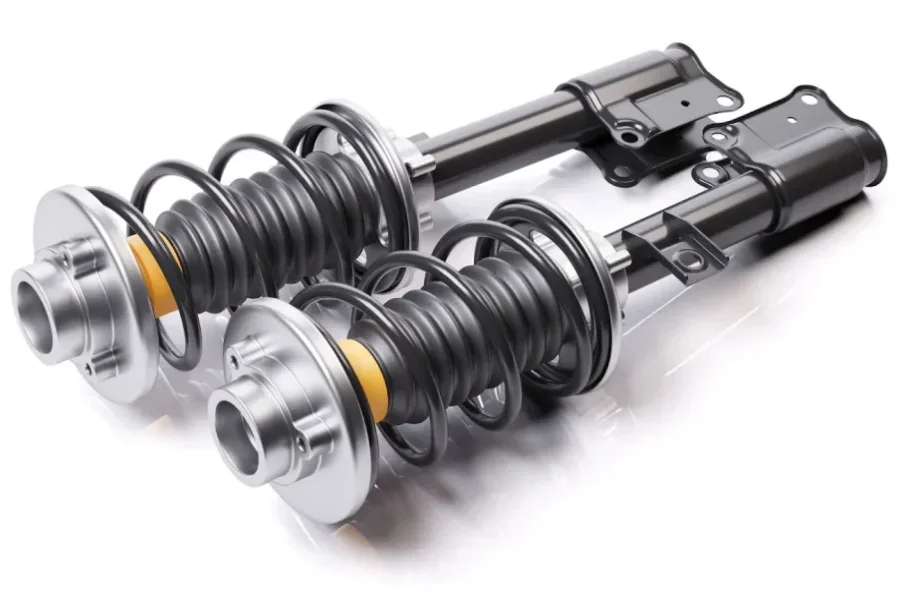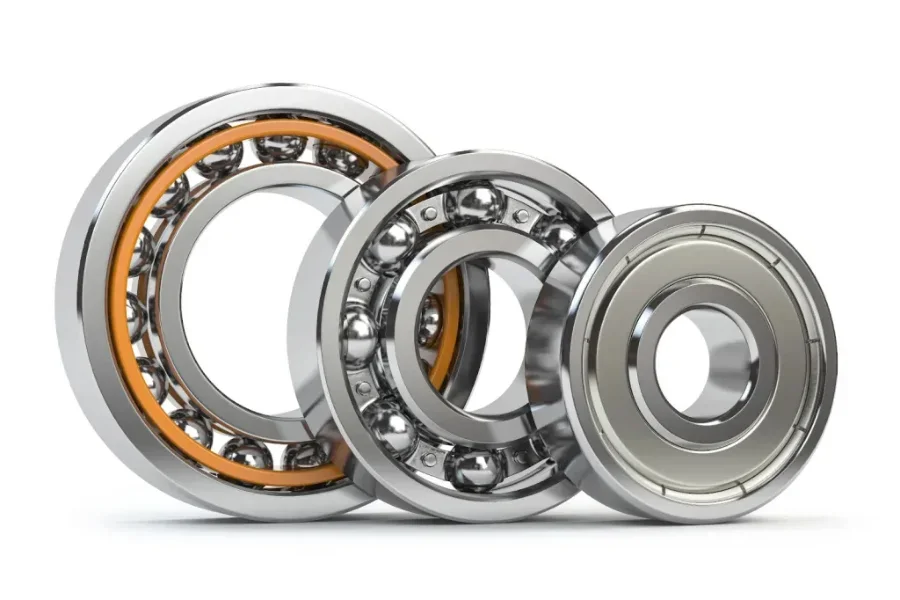A vehicle’s suspension is one of its most important components, directly affecting vehicle health and passenger safety. For this reason, when a suspension system becomes damaged it must be repaired as quickly as possible. But how can you know when to replace the various parts of a car’s suspension? This article will discuss what suspension is, what makes up a suspension system, and how to know when to change it.
Table of Contents
What is a car’s suspension system and why is it important?
What are the components of a car suspension system?
How can you tell if your car’s suspension system needs replacing?
When should you replace your car’s suspension system?
Conclusion
What is a car’s suspension system and why is it important?
Car suspension is the reason the vehicle can drive over many types of terrain without jolting either the steering wheel or the passengers. Good car suspension will mean improved handling, wheel alignment, and comfort, while weak car suspension can mean reduced to no comfort, and dangerous driving.
By keeping a vehicle’s suspension in check you can ensure safe driving as well as ensure that the vehicle is able to remain road-legal for longer. Having healthy suspension will also mean that the vehicle will retain its value.

What are the components of a car suspension system?
There are many different parts in a suspension system. When working out if it’s time to replace your car suspension, you also need to know which part to replace. So, here are the key parts of a suspension system:
Springs
These metal coils bend to absorb the impact of bumps when a vehicle goes over rough terrain. Springs are the reason passengers and drivers are able to drive over rocks and dips without feeling them or being rocked about.
Wheels
Wheels and tyres help improve smooth driving by being the only part of the suspension to touch the ground itself.
Shock absorbers (shocks)
Shock absorbers, as the name suggests, absorb the shocks from uneven roads. They work alongside the springs and wheels to ensure a comfortable ride.

Rods
These metal links join the various components of the suspension system, creating a suspension skeleton of sorts. Rods should never need replacing, unless the vehicle is in a severe accident.
Joints, bearings, and bushings
The joints, bearings, and bushings (or bushes) of a suspension system are the parts that connect the rods to the various suspension components. The reason there are three types is because each creates its own movement, allowing for the necessary sliding and twisting actions. Bushings and bearings allow for rotation. Ball joints allow for up and down movement, as well as left and right movement, and for this reason they are found on a vehicle’s front suspension, as this is the part of the vehicle that controls the turns.

Steering systems
The steering system is not a direct component of a suspension system, however, it is where you will first notice any issues with the vehicle suspension. The steering is connected to the suspension in order to turn the wheels and so engage the suspension for a smooth ride.
Frame
The frame is the main component of a suspension system, allowing for all the parts to be connected and work together without falling off the vehicle.
How can you tell if your car’s suspension system needs replacing?
Finding out whether it is time to change a vehicle’s suspension is easier than you might think, and the driver won’t need to go to a mechanic to work it out. Look out for the following tell-tale signs to see if it’s time to replace the vehicle’s suspensions system.
A bumpy ride
If the vehicle drives in a bumpy manner, where the driver and the passengers can feel every rock or dip in the road when driving, then there could be a problem with the vehicle’s shock absorbers. If shock absorbers weaken too much then it can become hard to handle the vehicle as every bump will jolt the steering.
Handling issues
If the driver experiences handling issues, then there is either a problem with the steering of the suspension system, as these are closely linked together. One problem that it can be within the suspension system is the joints. If you hear squeaking this could also mean that the power steering pump is failing.
Drifting or pulling to one side
If a vehicle pulls or drifts to one side when driving, there are a few possibilities of what is causing it. Usually it is due to low tyre pressure or unchecked wheel alignment, however, it can also be indicative of a broken tie rod, spring, or control arm, which can lead to bigger issues such as loss of control.
Nose diving or sitting low
If the vehicle sits low when parked or pushes the weight forward onto the nose when braking, then there is most likely a problem with the suspension system. If the vehicle sits low, it could have a broken spring, making it unable to properly hold the weight of the vehicle. If the vehicle nose dives, it could have a broken or weak shock absorber.
Damaged or oily shock absorbers
If the vehicle has damaged or oily shock absorbers, then it means the fluid is leaking onto them and will stop them working efficiently. This can be seen clearly by looking under the vehicle, and if it is the case, then it should be taken to a professional as soon as possible.
When should you replace your car’s suspension system?
The above tricks are a great way to work out whether it’s time to change the different components of a vehicle’s suspension, however, there are also various other methods to see if the suspension is weakening. Try the following methods before taking your vehicle to a mechanic:
- The bounce test: To carry out this test, simply park the car and walk to the front. Then, lean down on the hood with all of your weight. Let go and if the vehicle bounces more than two or three times, then the vehicle’s suspension should be looked at as soon as possible.
- Mileage of the vehicle: Although not a test, the mileage of the vehicle can be a good indicator as to whether the suspension needs work. If the shocks and struts have not been changed after 50,000 to 100,000 miles of driving, then they may need changing. If a driver is aggressive, however, they may need changing sooner.
Conclusion
Vehicle suspension is of paramount importance for road safety. To ensure that a vehicle is able to continue to drive smoothly, with good handling, and a comfortable ride for its occupants, it is important to check the various components of a suspension system regularly. Be sure to keep a look out for the five tell-tale signs that a car suspension is on its way out, and do the bounce test and check the mileage as a final precaution. Maintaining your vehicle’s suspension will ensure the avoidance of unnecessary safety risks and damage.



